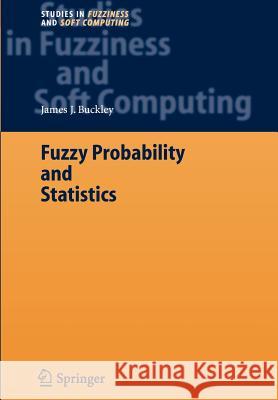Fuzzy Probability and Statistics » książka
Fuzzy Probability and Statistics
ISBN-13: 9783642068096 / Angielski / Miękka / 2010 / 270 str.
1.1 Introduction This book is written in the following divisions: (1) the introductory chapters consisting of Chapters 1 and 2; (2) introduction to fuzzy probability in Ch- ters3-5; (3)introductiontofuzzyestimationinChapters6-11; (4)fuzzy/crisp estimatorsofprobabilitydensity(mass)functionsbasedonafuzzymaximum entropyprincipleinChapters12-14; (5)introductiontofuzzyhypothesiste- ing in Chapters 15-18; (6) fuzzy correlation and regression in Chapters 19-25; (7) Chapters 26 and 27 are about a fuzzy ANOVA model; (8) a fuzzy esti- tor of the median in nonparametric statistics in Chapter 28; and (9) random fuzzy numbers with applications to Monte Carlo studies in Chapter 29. First we need to be familiar with fuzzy sets. All you need to know about fuzzy sets for this book comprises Chapter 2. For a beginning introduction to fuzzysetsandfuzzylogicsee[8]. Oneotheritemrelatingtofuzzysets,needed infuzzyhypothesistesting, isalsoinChapter2: howwewilldeterminewhich of the following three possibilities is trueM< N,M> N or M? N,for two fuzzy numbers M, N. TheintroductiontofuzzyprobabilityinChapters3-5isbasedonthebook [1] and the reader is referred to that book for more information, especially applications. Whatisnewhereis: (1)usinganonlinearoptimizationprogram in Maple [13] to solve certain optimization problems in fuzzy probability, where previously we used a graphical method; and (2) a new algorithm, suitable for using only pencil and paper, for solving some restricted fuzzy arithmetic problems. The introduction to fuzzy estimation is based on the book [3] and we refer the interested reader to that book for more about fuzzy estimators.











